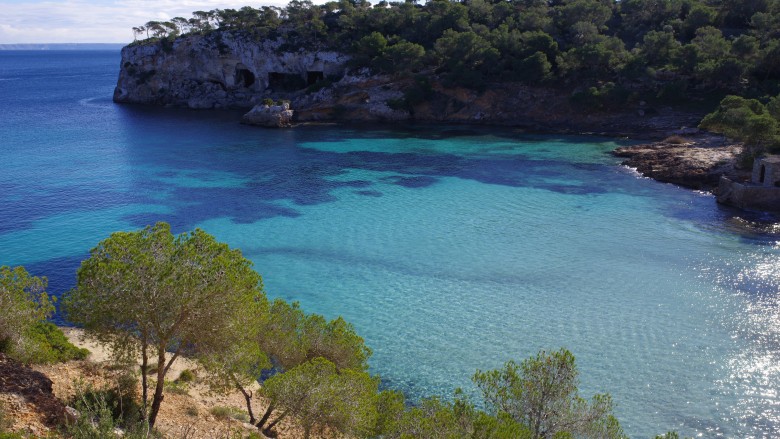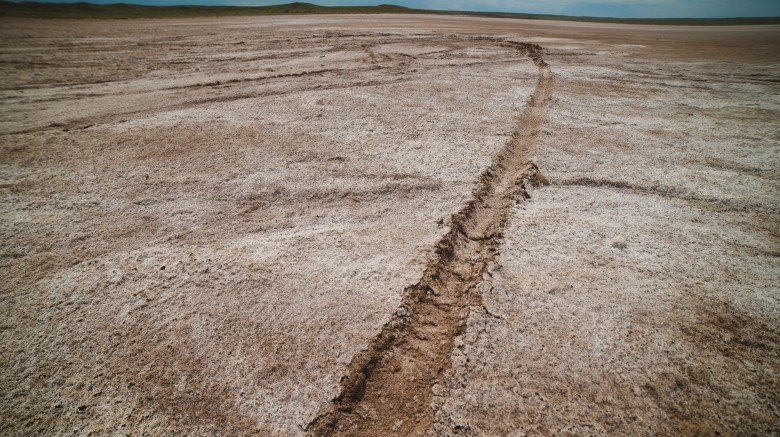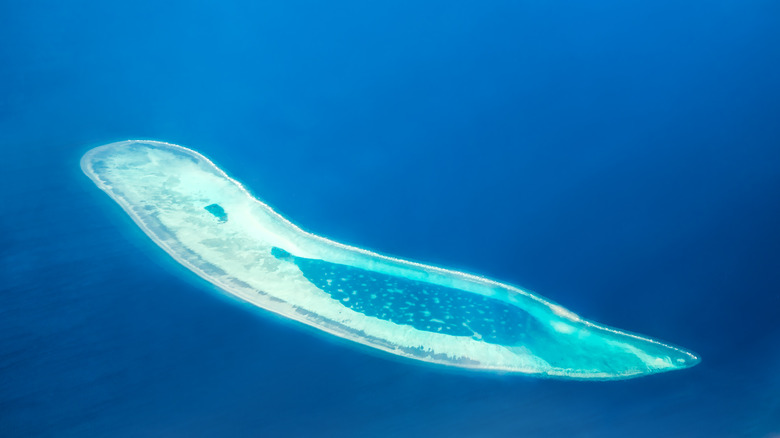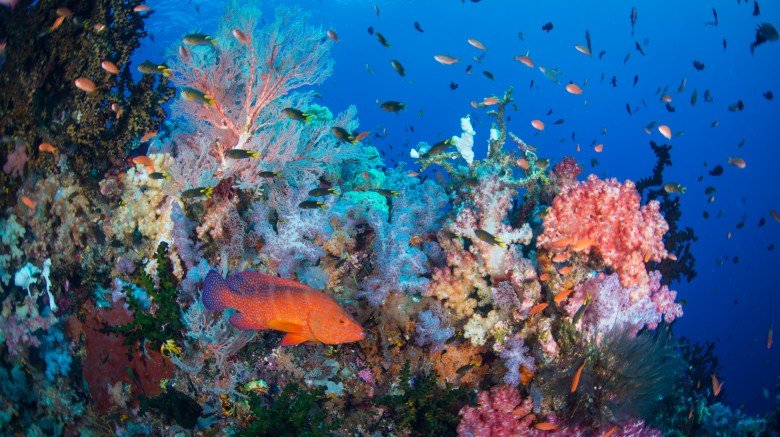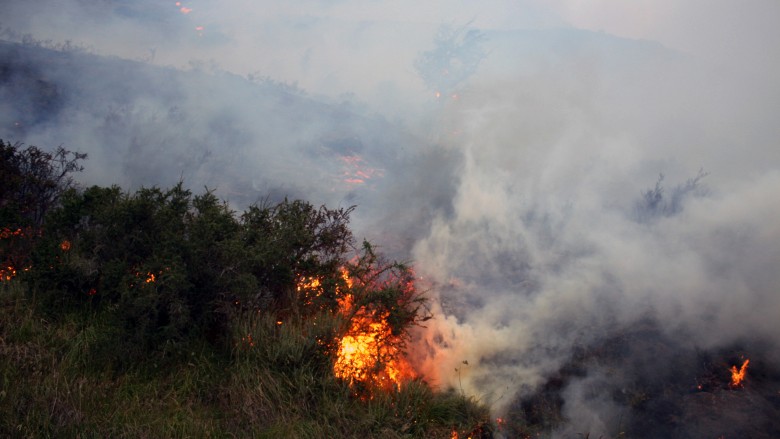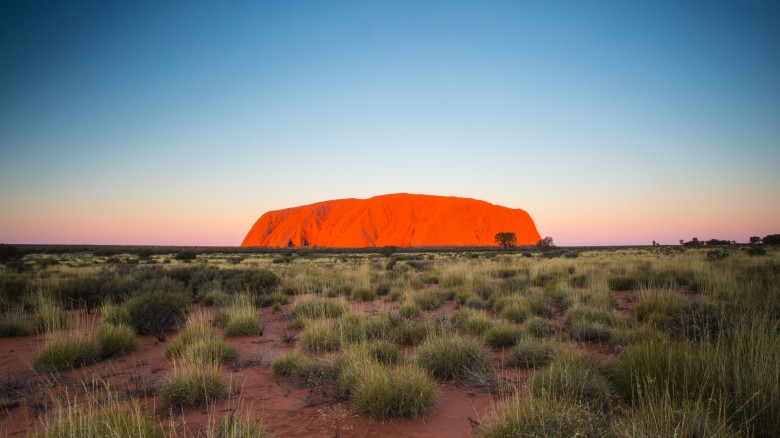Amazing Natural Wonders Destroyed By Idiot Tourists
The natural world sure is a wonderful place. The mountains, canyons, waterfalls, and coral reefs of our Earth is catnip for the soul, encouraging us to leave our gray, lifeless cities, venture out into the wild ... and completely trash whatever we find there. Yep, turns out that for some of us, "appreciation" is perhaps a shade too close to "annihilation." Want to experience the natural wonders of our Eden-like Earth? You better make sure you get there ahead of these bozos.
Oregon's ancient duckbill formation is toppled by idiots
Sometimes, you gotta feel sorry for God. He spends hundreds of thousands of years directing wind against a lump of Oregon rock, lovingly shaping it into an uncanny likeness of a duck's head, only for a bunch of teens to destroy all that hard work in a handful of seconds. Come on, humanity. First you kill the guy's only son, and now this? Cut Him some slack, yeah?
At the time the Duckbill was sent tumbling to its premature grave, it was one of the best-loved tourist attractions in the Pacific Northwest. Oregon State Parks had taken it under their wing, erecting barriers so nobody could accidentally topple the ancient formation. Unfortunately, they didn't factor in those who might want to intentionally destroy it. In late August 2016, a group of six teenagers clambered over the wires and—for reasons known only to their tiny, hormone-soaked brains—pushed the Duckbill over. Or rather, three pushed it, while the other three watched and cheered. We're not totally sure who the bigger idiots are in this situation, but instinct tells us it's everyone.
The worst part? They were never caught. The not-quite-so-bad-but-still-pretty-bad part? Even if they were, Oregon state law means they'd only get a fine of $435. Luckily, the whole incident was caught on video, which we've embedded above in the hope that hiring managers will see it, memorize their faces, and then reply to their future job applications with hollow, mocking laughter.
A drunk driver kills the loneliest tree on Earth
The Tree of Ténéré is a natural wonder that spent centuries as the Chris Pratt of the tree world: instantly recognizable, beloved by millions, and with abs to make your grandma sweat (we may have got distracted there). The only tree for 250 miles in the blistering heat of Niger's Sahara Desert, it had served as a landmark for nomads for centuries. So empty was the surrounding wasteland that European militaries even marked the tree on official campaign maps. Its mere existence in such a hostile environment was a miracle.
Yet there was one thing even this hardy survivor couldn't handle being thrown at it.
The year was 1973. An unnamed Libyan was driving his truck to Niger, following a centuries-old caravan route that passed near the tree. Presumably hoping to break up the monotony of the landscape, the guy started to drink. And drink. And drink. By the time he reached the tree, he was so wasted that he plowed his truck into it, killing this miracle of nature.
The story only gets more incredible when you realize the tree was literally the only obstacle for over 200 square miles. We're not sure how drunk you need to be to hit the only hittable thing in an area that big, but whatever he was drinking, we want a bottle of it.
The Boy Scouts topple Utah's ancient boulders
The Goblins of Utah are one of the most surreal sights in the whole of America. Huge, mushroom-shaped boulders perched atop narrow sandstone stalks, they look like some giant's attempts at playing Lego. Formed over millions of years by a fluke of erosion, these rocks can be found nowhere else on Earth. For 99.99 percent of visitors, they're a natural marvel.
But Glenn Taylor isn't 99.99 percent of people. Where others saw mere beauty, he saw a potential safety hazard that had to be destroyed.
It was 2013. Glenn had been leading a Boy Scout troop through the valley when he first saw the Goblins. In a flash of paranoia, he realized that if one of these teetering rocks happened to be shoved by an idiot just as some kids were passing beneath, it could kill them all. Rather than let this unlikely scenario come to pass, Glenn decided to beat his hypothetical idiot to the punch and push those darn rocks over right now. A few hearty shoves later, and millions of years of history had been crassly obliterated.
Hilariously, when authorities looked into the incident, they realized this was the same Glenn Taylor who had filed a personal injury lawsuit four years before, claiming a car crash had left him permanently disabled. That's one of those disabilities that still allows you to still push around heavy boulders, presumably.
Graffiti artists tag Ireland's magical Moher Cliffs
Look up from the base of Ireland's Moher Cliffs, and you'll see 300 million years of history unfolding spectacularly before your eyes. Climbing 390 feet out the Atlantic, the cliffs are world famous among geologists, ornithologists, and plenty of others who have job titles ending with "-ologist." So you can imagine the scientific community's collective horror when they strolled down to the cliffs one morning in 2013 to find they'd been plastered in terrible graffiti.
Covering an 8 feet by 6 feet section of cliff, the abstract art took the natural wonder of Ireland's coastline and replaced it with the natural beauty of an inner-city crack shack. The work was tracked to a duo of French hitchhikers who went by the nicknames "Mama" and "Dirty Eidor" and had spent the last couple of weeks tagging the whole of the country. When videos of them defacing the Moher Ciffs appeared on Vimeo, the two were forced to deactivate their accounts due to the volume of hate mail.
The good news is that the graffiti was cleared off by experts without damaging the cliffs. The bad news is that Mama and Dirty Jerkbag were never punished. And yet people still rag us about that time we drunkenly took a moose joyriding. Life just isn't fair.
Careless teenagers burn an entire Spanish island
Spain's Balearic Islands are Mediterranean beauty on steroids. Thanks to their climate, they're also at the epicenter of a vomit-and-violence-based storm generated by drunken visiting Brits. Mostly, this mayhem is confined to the beach resorts and the city of Palma. However, like a terrifying invasive species, it sometimes escapes into the wild, with devastating consequences for the local ecosystem. Like the time two Scottish teenagers burned an entire island to the ground.
It was summer 2015, and the whole of Majorca was on high fire risk warning. Into this setup for a 1970s disaster movie (The Towering Inferno 2: The Horizontal Inferno), stepped Robbie Nimmo and his BFF Calum. The two had rented a pedalo and, um, pedaled to the pristine, uninhabited Isle de Sa Porrassa. Tried from their exertions, they sat down on some handy dry grass to have a cigarette. You can probably guess what happened next.
Calum dropped his smoke, starting a fire that raged out of control until it consumed the whole island. Five acres were devastated, destroying the habitat of the island's Black Lizard. With either heartwarming graciousness or a kamikaze disregard for their citizens' wishes to not die in an unstoppable wildfire, Spanish police declined to press charges, saying they accepted the fire was accidental.
Redneck driver does donuts over Death Valley's pristine "Racetrack Playa"
A pristine dry lake deep in the burning heart of Death Valley, Racetrack Playa is home to one of the weirdest events in nature. Gigantic rocks move across its surface seemingly by themselves, leaving impossible wiggly trails behind them. It took scientists until 2013 to discover the mechanism behind this freaky spook-show (hint: the answer isn't "ghosts"), and the Racetrack is still regarded as an invaluable scientific site. At least it was, until some redneck tourist in an SUV decided to do donuts over vast stretches of it.
Here's a handy explainer for anyone who is still confused. The "Racetrack" part of "Racetrack Playa" is meant to be an evocative description, not an invitation to stage your own one-man demolition derby. Got it, playa? The site's surface is so unbelievably fragile, even the slightest touch can leave devastating damage that won't disappear for decades. So go hot rodding over it, and the consequences of your drunken fun times will be visible to visitors until sometime in the mid-2030s.
Yet this is exactly what happened in September 2016, when some redneck bozo tore up 10 square miles of the Racetrack, in what he probably later described to his buddies Rufus and Bubba as "the bender of a lifetime." The worst part? That the last sentence isn't even the worst part. Not four months later, Racetrack Playa was again vandalized when more joyriders drove across it. Here's a hint, guys: those ISIS videos celebrating cultural destruction aren't meant to be a source of inspiration.
A graffiti artist tags multiple National Parks, leaves her social media details
We've all been there. It's a beautiful day, you're backpacking through a US National Park, admiring the sheer majesty of God's works, when the urge suddenly hits you to whip out a spray can and tag the living hell out of it. Whoops, our bad. We mean that literally never happens to any human who isn't suffering through the final, often terminal stages of Acute Moron Brain Syndrome. Sadly, Casey Nocket was clearly afflicted with this terrible, little understood condition. In 2016, this NYC native went on a tour of US National Parks in the Southwest, leaving giant murals of her face and social media accounts plastered across all of them.
Her spree defaced vistas from Crater Lake, to Zion, to Joshua Tree, to Death Valley (seriously, why does seemingly every jerkbag under the Sun have it in for Death Valley?). Perhaps the part most guaranteed to make your blood boil was how Nocket used her large-scale desecration to promote her Instagram account, meaning her flagrant disregard for basic human decency really just amounted to an attempt to make some money.
Thankfully, there's a happy ending to this tale. After hiking blog Modern Hiker posted photos of Nocket's graffiti in nine National Parks, Reddit picked up the story and tracked her down. The resulting court case saw Nocket banned from all US National Parks, plus land owned by the United States Forest Service, Bureau of Land Management, or the US Army Corps of Engineers. That's a whopping 20% of the entire USA, kids, meaning there's now a fifth of the country where you'll never have to worry about accidentally bumping into this Instagram "artist."
China introduces tourism to pristine islands, visitors immediately eat every species on them
Located in the South China Sea, the Paracel Islands had, until recently, been shut off to humanity for decades. This allowed them to become mini-Edens overflowing with abundant and glorious wildlife. But while the story of the Garden of Eden ends with Adam and Eve eating an illicit apple, the story of the Paracel Islands' ends like the OTT blockbuster version of Genesis. Rather than a single piece of fruit, the islands' first visitors wound up eating absolutely everything in sight.
In 2016, China officially opened up the disputed Paracel archipelago to (Chinese) tourism. From the moment the first boat landed, happy vacationers from the mainland were posting gleeful photos online of all the endangered species they'd killed, cooked and eaten. Rare giant clams, local lobsters, unique sea urchins, and more all became part of an ongoing banquet that saw the islands' ecosystem devastated. To top it off, the tourists then plucked entire species of colorful coral into extinction, just so they'd have some souvenirs to take home.
When word of this wanton destruction broke on Chinese social media, there was an outcry. Sadly, it seemed to encourage future visitors, rather than discourage. The Paracel Islands are still being treated as one giant picnic, but at least those doing the eating have a finely-tuned (if completely self-unaware) sense of irony. One visitor who posted photos of herself devouring an endangered giant clam also posted a picture of an endangered sea turtle captioned "we must take care of them!" We could muster up some amusing analogy about how people in glass houses shouldn't hurl defenseless turtles, but we're too busy picking our jaws up off the floor to manage the mental and verbal dexterity required.
A British cruise ship trashes Indonesia's most valuable reef
When a coral reef has the nickname "the underwater Amazon," the last thing you want to become known for is the subaquatic equivalent of deforestation. That's exactly what cruise ship operators Noble Caledonia apparently aspired to when they did a number on the reef that would put a Brazilian logging company to shame. In March 2017, the captain of the Caledonian Sky drove his humongous ship over the top of the reef as part of a birdwatching trip for the nearly 100 tourists onboard. With a blissful disregard for the laws of physics, he decided not to wait until high tide to do so. Calamity ensued.
The Caledonian Sky grounded on the reef, badly damaging some 1,600 square meters of coral. To make matters worse, the ship then called in a tugboat to drag her off, causing yet more damage to this fragile ecosystem. Imagine wantonly blowing up over a kilometer of rain forest and all the remarkable species you'd kill doing so. Congratulations, now you know what it feels like to be the captain of the Caledonian Sky.
Visitors repeatedly flatten Chile's most beautiful park
If you've never heard of Torres Del Paine National Park, do yourself a favor and Google Image search that sucker right now. Beautiful, right? Spreading for nearly 1,000 square miles through Chile's Patagonia region—already a wonderland of ice and elemental nature—stunning Torres Del Paine is the National Park all other National Parks wanna be. At least, they do on a good day. On a bad day, Torres Del Paine is too buy getting burned down by idiot tourists to focus on looking beautiful.
Despite being a land of ice and fog and snow, Torres Del Paine gets flattened by human-started fires so regularly you could almost set your watch by it. In 2005, Czech tourist Jiri Smitak managed to start an accidental blaze so big it wiped out 5 percent of the entire park. 12,000 acres of topsoil and 2,250 hectares of pristine forest became 12,000 acres and 2,250 hectares of lightly smoldering carbon, following a blaze it took firefighters 10 days to get under control. The Czech Republic was so embarrassed by Smitak that it donated $1 million to restoration efforts.
Not that restoration did any good. Fast forward to 2011, and an Israeli tourist accidentally started another fire that consumed another 4–5 percent of the park and caused another astronomical amount of damage. Thankfully, this time everyone learned their lesson and agreed to stop being such morons ... oh, whoops. No they didn't. Four years after that, in 2015, two more tourists were booted out the park for trying to start an illegal campfire in a dry area of highly flammable forest.
Tourists turn Australia's Uluru into one giant toilet
Uluru (also known as Ayer's Rock) is a gigantic sandstone monolith that rises out the flat Australian outback like some sort of mystical party trick. What it clearly isn't is a great big place for pooping and peeing like you never heard of indoor plumbing. Somehow, Australia's millions of international tourists didn't get the message. In the past couple of decades, so many tourists have left so much poop on Uluru that they've managed to kill off an entire species.
Branchinella latzi was a fairy shrimp so rare it was only found in pools of water on Uluru. The key word here is "was." Since the 1970s, Latzi have disappeared. In 2009, retired wildlife science professor Brian Timms did some research and came to the conclusion that tourist poop was the culprit, after visitors took to defecating on top of Uluru because there were no toilets available.
This would be bad enough if Uluru was just a spectacular piece of rock. It's also a sacred site for Australia's indigenous Anangu people, to whom the government returned ownership of the rock in 1985. The Anangu don't like people climbing on Uluru, period. So you can imagine how they feel about tourists squeezing pellets out on top of it, and the answer rhymes with "royally fissed." Unfortunately, they can't just ban climbers, because Anangu culture says individuals are required to figure out themselves what's right and wrong and to take responsibility for their actions. The fact that they still believe this after decades of dealing with the general public is all sorts of impressive.
Tourists repeatedly introduce invasive species to the Galapagos
The Galapagos is a wild natural wonder so untouched that it makes remotest Alaska look like your local K-Mart. Or so you'd think. In the 180-odd years since Charles Darwin visited these unique islands, things have changed. By that we mean that many of the islands' celebrated native animals are no longer so unique. Thanks to mass tourism, the islands are now overrun with invasive species that threaten the entire ecosystem.
Ironically, it was probably the islands' famous isolation that led to this tourist boom. As recently as the 1970s, visiting the Galapagos meant hitching a ride on a freight tanker and then spending a week in a forgotten Eden. Such stories fueled the Galapagos Islands' rise to the top of lists with titles like "10 Places to See Before you Die," and suddenly a whole bunch of people seemed to be worrying that they were gonna die very soon. In the last 15 years, tourists have flocked to the Galapagos. And they've brought all sorts of new and incompatible species with them.
Already, the island of Santa Cruz has been ensnared by a habitat-destroying blackberry, and Isabela is being strangled by a new creeper. Galapagos ants are being killed and replaced by uppity mainland ants, while tourists are also running over rare finches in astonishing numbers. Given that a single tourist vessel can bring some 300 invasive bug species to the Galapagos, and that hundreds of boats arrive on the archipelago each year, we're guessing things aren't gonna be pristine much longer.
Drunken rednecks vomit on a pristine habitat, kill world's rarest fish
The Devil's Hole pupfish is one of the rarest fish species in the world. They live solely in the waters of Devil's Hole (duh) in Death Valley National Park. They're so rare that experts believe there may be only 115 of them in existence. Whoops, make that 114. In 2016, three drunken hillbillies clambered into Devil's Hole and let rip on the fragile ecosystem. By the time authorities came to reel them in, the area was devastated and at least one pupfish was dead.
The actual actions of these dudes read like a Dummies' Guide to Acting Like a Redneck Stereotype. The guys drove up tanked, fell over the fence, and shot out security cameras with a shotgun. They tossed beer cans in the water, vomited into it, and one guy even left his dirty boxer shorts behind. If reporters found they'd rounded off the evening by marrying their cousins and getting in a fight at a Nascar rally, we wouldn't be in the slightest bit surprised.
Aside from the single pupfish they directly killed, the men damaged food sources and egg sites, likely killing yet more Devil's Hole pupfish down the line. Not that their antics did anything to discourage others. That fall, another drunk tourist did donuts in his SUV across Death Valley's fragile Racetrack Playa, a name that's meant to be evocative rather than instructive. It's just like Joni Mitchell sang in "Big Yellow Taxi": "They paved paradise / and then destroyed it in a mindless orgy of drunken redneck violence."
